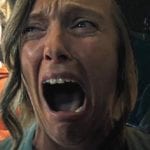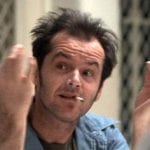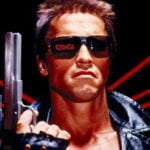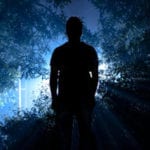 History
History  History
History  Technology
Technology Top 10 Everyday Tech Buzzwords That Hide a Darker Past
 Humans
Humans 10 Everyday Human Behaviors That Are Actually Survival Instincts
 Animals
Animals 10 Animals That Humiliated and Harmed Historical Leaders
 History
History 10 Most Influential Protests in Modern History
 Creepy
Creepy 10 More Representations of Death from Myth, Legend, and Folktale
 Technology
Technology 10 Scientific Breakthroughs of 2025 That’ll Change Everything
 Our World
Our World 10 Ways Icelandic Culture Makes Other Countries Look Boring
 Misconceptions
Misconceptions 10 Common Misconceptions About the Victorian Era
 Mysteries
Mysteries 10 Strange Unexplained Mysteries of 2025
 History
History 10 Things You Didn’t Know About the American National Anthem
 Technology
Technology Top 10 Everyday Tech Buzzwords That Hide a Darker Past
 Humans
Humans 10 Everyday Human Behaviors That Are Actually Survival Instincts
Who's Behind Listverse?

Jamie Frater
Head Editor
Jamie founded Listverse due to an insatiable desire to share fascinating, obscure, and bizarre facts. He has been a guest speaker on numerous national radio and television stations and is a five time published author.
More About Us Animals
Animals 10 Animals That Humiliated and Harmed Historical Leaders
 History
History 10 Most Influential Protests in Modern History
 Creepy
Creepy 10 More Representations of Death from Myth, Legend, and Folktale
 Technology
Technology 10 Scientific Breakthroughs of 2025 That’ll Change Everything
 Our World
Our World 10 Ways Icelandic Culture Makes Other Countries Look Boring
 Misconceptions
Misconceptions 10 Common Misconceptions About the Victorian Era
 Mysteries
Mysteries 10 Strange Unexplained Mysteries of 2025
Top 10 Movies that Launched a Genre
It’s a pretty big deal being first, but it’s an even bigger deal to be the one credited with launching a genre. In our top 10 list for today, we’ll be looking at movies that weren’t necessarily the first of their kind but were, rather, influential enough to standardize industry-genre standards. We’re talking about everything from themes to industry practices. And of course, all of these movies hyped up audiences, producers, and directors enough that their legacies would result in a series of mainstream and cult-status films that we still enjoy today.
10 Metropolis (1927)
Fritz Lang’s 1927 classic Metropolis remains relevant in the science fiction (sci-fi) genre of futuristic possibilities. While it wasn’t the first sci-fi film, with the short film A Trip to the Moon by Georges Méliès released in 1902, it was the first feature-length film that transcended filmmaking during its time.
The film’s futuristic approach included superhighways, large skyscrapers, robots, and underground machines, which set a standard for what sci-fi should involve. It has influenced multiple films and comic book artists following it. For example, the robot-woman in Metropolis inspired Star Wars’ beloved C-3PO droid. The creators of Superman, Jerry Siegal and Joe Shuster, loved the film so much they credited Metropolis’ creative futuristic cityscape as the inspiration for Superman’s home.
Metropolis’ social message and characters are also relatable nearly 100 years later. We’re reminded of the importance of empathy and mediation by exploring how one can have good intentions to help without the right information to create change. The Thin Man character also manipulates information for personal gain – similar to modern social media trolls. It seems this film really did project into the future.
9 Frankenstein (1931)
Sometimes dubbed “The King of All Monsters,” Dr. Frankenstein’s monster is a slightly misunderstood iconic image.
Unlike most famous Halloween monsters, Frankenstein’s monster originates from an 1818 book by Mary Shelley. The original Frankenstein monster was sensitive and intelligent, only becoming murderous after Dr. Frankenstein refused to create him a companion.
While the book’s first film adaptation was in 1823, we owe it to Universal Studios for Frankenstein’s explosion of popularity. In 1931, James Whale (“The Invisible Man”) directed Frankenstein with Boris Karloff (“The Mummy”) playing the monster.
Narratives involving “monsters” with emotions and the relationship of a creator and their “monster” inspired multiple filmmakers years following. For example, the 1987 cult classic RoboCop by Paul Verhoeven (“Hollow Man”) is about a dead police officer turned cyborg whose memories start haunting him. In the 1982 Blade Runner, we see creations rebelling against an uncaring creator. The list of movies influenced by Frankenstein goes on with Edward Scissorhands in 1990 and Upgrade in 2018.
8 Peeping Tom (1960)
When it comes to slasher movies characterized by killers using blades to slash a group of people, Peeping Tom takes the cake. It’s terrifyingly creepy, features themes ahead of its time, and has multiple people dying from a bladed camera tripod.
While Halloween, released in 1978, was mainstream and helped popularize the slasher genre, it’s far from the first slasher. The 1960 Psycho by Alfred Hitchcock (“Vertigo”) isn’t really slasher enough. It is more akin to a psychological horror drama.
In Peeping Tom, the cameraman Mark Lewis (Karlheinz Böhm, “Sissi”) closes in on his female victims and films their expressions as they die. Although this film is iconic today and had great camera work and scenes looking more like a 70s creation, it actually ended Michael Powell’s (“Stairway to Heaven”) directing career.
How? Not because it was bad. In fact, even Hitchcock had shots inspired by the film in his sequence of Vertigo. It was because Powell introduced the voyeurism theme to the big screen. Viewers just weren’t ready to accept his showcasing of a taboo but human trait: the curiosity of watching others’ lives.
7 Night of the Living Dead (1968)
Since George A. Romero’s (“Monkey Shines”) feature debut of Night of the Living Dead (NOTLD) in 1968, horror movies were never the same again. Why? Because it introduced a new kind of monster and triggered a whole new subgenre of horror known as zombie films.
From the 1974 Let Sleeping Corpses Lie to The Walking Dead TV series and Resident Evil game and film, NOTLD has influenced entertainment for decades. People’s reactions to these nearly unstoppable flesh-eating monsters are also part of what makes NOTLD so interesting, inspiring, and scary.
Let’s not forget, the film represents more than just zombies by being one of the first independent films to earn success outside a Hollywood studio. It provided an early example of crowdfunding that remains a model for indie horror filmmaking. A revolution so many owe thanks to.
6 Enter the Dragon (1973)
Yes, other martial arts movies came before Enter the Dragon in 1973. However, the plotlines and dialogue were typically weak and there was no fascination with the lead man. Robert Clouse’s directing (“Dragon”) and Bruce Lee’s (“Fist of Fury”) screen presence and stunning fight sequences changed all this.
With yowls, shrieks, knuckle-cracking, and inflating torsos, Bruce Lee captured the audience’s attention and launched the popularity of the Kung Fu film globally. Enter the Dragon earned $350 million worldwide, which is over $1 billion today if you consider inflation! This is especially significant since Wuxia, a genre of martial artist adventures, was banned in China for around 50 years until 1980.
Stars such as Jackie Chan (“Rush Hour”) often talk about their respect for Bruce Lee and how he influenced them in their careers. Lee also gave Chuck Norris’ (“The Expendables 2”) his movie debut in 1972 and Norris has since starred in multiple martial arts films, including Enter the Dragon. It’s hard to imagine action martial art films without these stars!
5 Snow White (1934)
Disney’s Snow White was risky, it was colorful, and it was groundbreaking. In 1934, Walt Disney got up in front of his cohort and proposed creating 80-minutes of animation. The subject was none other than “Snow White and the Seven Dwarves.” No other studio had attempted it and Hollywood was entirely skeptical of the project.
Disney raised ten times the amount of money than a studio would get for a short; he sent his animators back to school to study motion. The studio brought in live actors, filmed their motion, and painstakingly traced each frame. They even created over 1000 shades of paint for the project.
The entire project went insanely over-budget and so many people doubted its success. But we all know how it turned out: really well.
Because of Snow White, studios ventured out into new territory. We saw an increasing interest in the princess, specifically, the Disney princess. It not only launched a genre, it launched an entire empire!
4 Connery Era James Bond (1960s)
“Shaken, not stirred.” That’s how James Bond likes his cocktails, and essentially what the early James Bond films did to the world of action. They introduced the car chases, the technology, the sexy spy and the even sexier female leads. Not consent, though. Yeah…definitely not that.
Anyway…
After the premiere of Dr. No, action films became the way we worked out political tensions. The bad guys were our Cold War enemies, the inventions our badass technology. The good guy only sort of followed the rules and our villains held us captive with near-ridiculous schemes.
James Bond made action exciting, and that is a major understatement.
3 The Maltese Falcon (1941)
The Femme Fatales, the curling of cigarette smoke, Humphrey Bogart…it must be a film noir. The Maltese Falcon, released in 1941, is considered by many film enthusiasts to be the film that shaped “film noir.”
It has the cynical, quick-talking characters, the mood lighting, the um, questionable, moral backbone? There really is no moral accuracy in a film noir. It’s a sultry, messy, black-and-white mystery, with our protagonist stuck between what is right and wrong.
The story of The Maltese Falcon is a simple one. Detective Sam Spade (Bogart) takes on the case of a mysterious woman. Shortly after she enters the scene, Sam’s partner is killed and he winds up on a search for the Maltese Falcon, a much-desired jewel.
But a film noir isn’t always a detective story. Historically, we bundle the occupation with the genre…because of…*wait for it*…The Maltese Falcon, yes, that’s right! The movie gave us the formula, the mood; it shifted the detective movie genre and showed us that the way to Hell is, in fact, paved with good intentions.
2 Broadway Melody (1929)
When it comes to “talkies,” 1929’s Broadway Melody is not the first. We can thank 1927’s culturally relevant and problematic The Jazz Singer for that. But “The Jazz Singer” isn’t the movie we usually equate with big, bawdy show tunes, flashy choreography, and happy-go-lucky endings.
That belongs to Broadway Melody.
Broadway Melody is chock-full of recognizable music, including “Give My Regards to Broadway” and “Broadway Melody” and “You Were Meant for Me,” both used for the classic musical Singin’ in the Rain.
The movie musical steers through its plot in true theatrical production fashion, centering around creating a Broadway musical revue. It may not be the most enthralling piece of cinema compared to everything we have access to today, but it certainly celebrates the best and the worst of those early Broadway days. It was the first talking picture to win an Oscar for Best Picture and a huge feat in film innovation with sound.
1 Meshes of the Afternoon (1943)
If you want a deep-cut experimental film that paved the way for any subsequent avant-garde undertaking, 1943’s Meshes of the Afternoon is your movie. The 18-minute short is filled to the brim with symbolism, dream-like imagery spilling into reality, and endless possibilities of interpretation.
Major filmmakers, most notable among them Kenneth Anger (“Lucifer Rising”), Ingmar Bergman (“Wild Strawberries”), and Stanley Kubrick (“The Shining”), site “Meshes” as a direct influence on their works.
Written by Maya Deren and created with the help of her husband, cinematographer Alexander Hammid, “Meshes” doesn’t just document an incident, it explores the emotions surrounding the incident. And with emotions being what they are, the rise in popularity of Jungian and Freudian critical theory at that time, and the absence of dialogue, it makes for the perfect “trance film.”
Deren is now considered the godmother of avant-garde cinema and leaves behind a legacy of weird, trippy cinematic masterpieces that may be best watched under the influence of existential duress, caffeine-induced insomnia, and hipster-driven interest.








